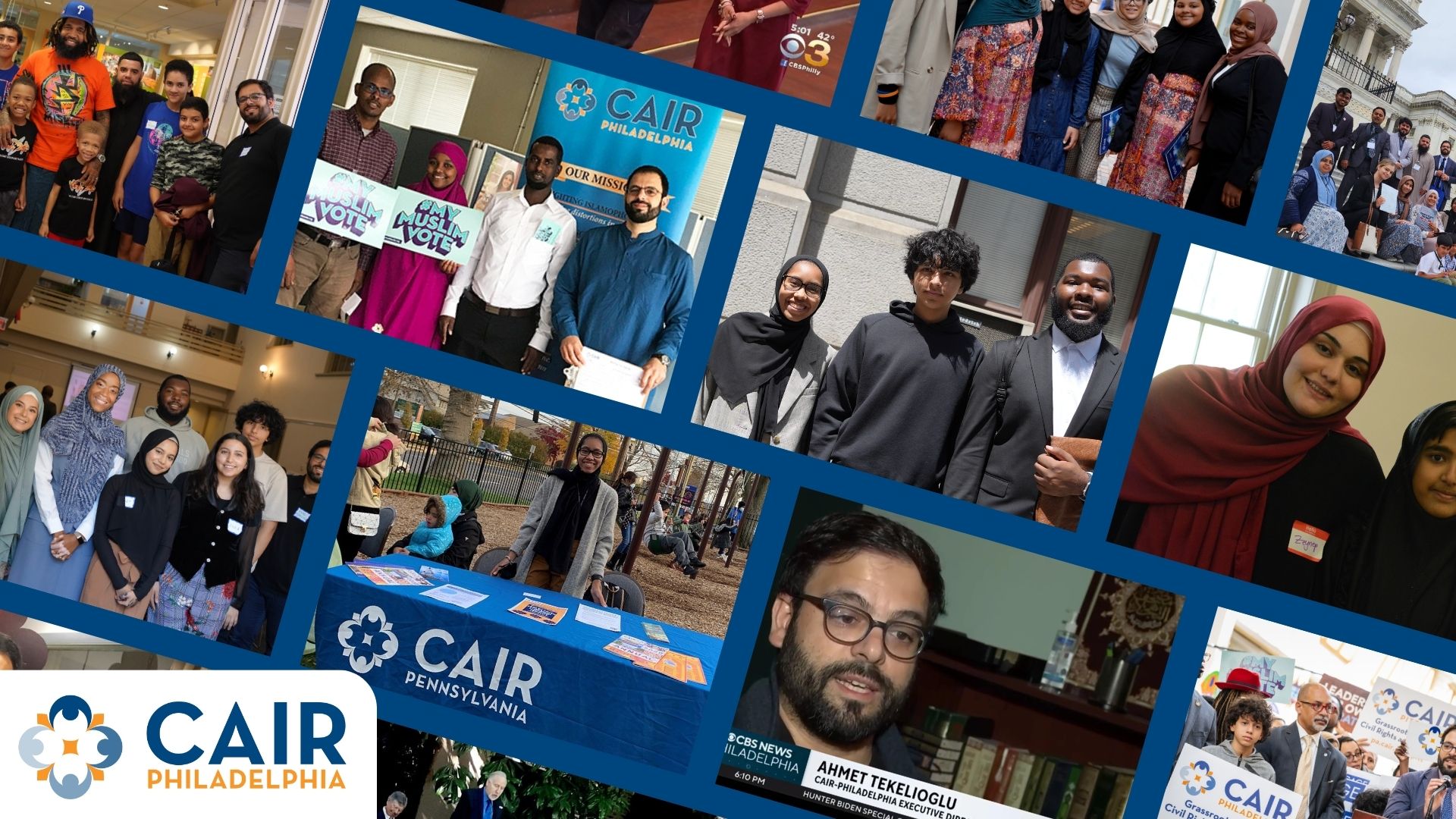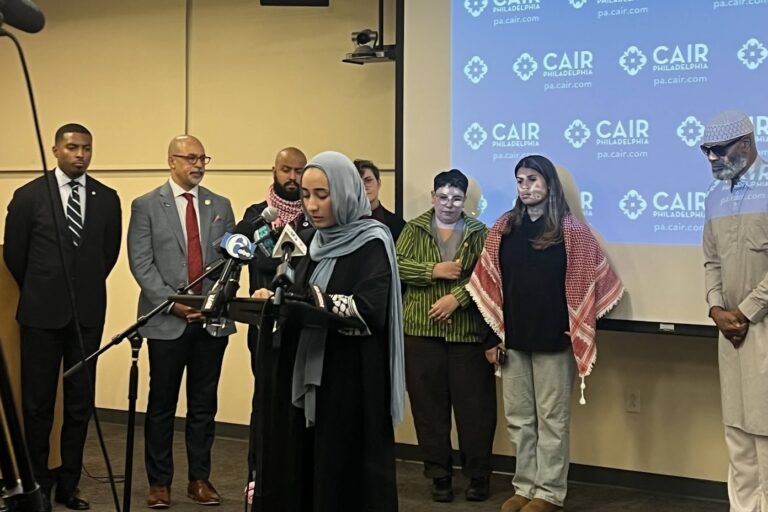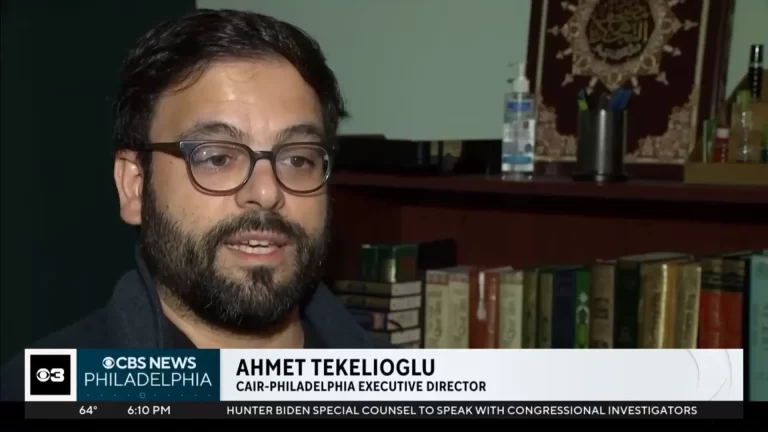There’s a thin piece of fabric that divides female Muslim population of the United States nearly in half. It’s often made of lightweight cotton, polyester or rayon—but its significance far outweighs the actual material.
It’s the hijab, and roughly 43 percent of Muslim women in America wear this Islamic head covering, according to the Pew Research Center.
But some leaders within the Muslim community say women who wear the hijab are becoming targets for hate crimes and verbal assaults.
Moein Khawaja is the executive director of the Council on American-Islamic Relations (CAIR) in Philadelphia. The organization’s 2010 report on hate crimes against Muslims is due for release next week, and according to Khawaja, there is a growth of hate crimes and verbal assaults against Muslims in the United States, especially for those who wear the veil.
“It really comes down to how identifiably Muslim you look,” Khawaja said. “I think women who choose to cover might be more prone to verbal assaults and comments, whereas a man who might not be visibly Muslim will just blend in with the crowd.”
A veiled woman becomes an ambassador to Islam, as one hijab-wearing woman pointed out, because she physically is a walking symbol of the religion.
Becoming an intermediary between Muslims and non-Muslims is a task that Dania A. accepted when she put on the hijab. But she says it does mean she might be targeted because of the way she looks.
The 26-year-old has been wearing the hijab for over a decade and faced little backlash in Florida, where she grew up. That all changed after she moved to New York City two years ago.
While Khawaja says it’s difficult to say exactly what created the spike in hate crimes or verbal assaults, CAIR studies show the beginnings of a backlash against Muslims in 2008. Barack Obama’s origins and family religious affiliations brought Islam to the limelight once again, as anti-Muslim and Islamic watch groups formed.
“In 2008, it was like a perfect storm gathering, with the election of Barack Hussein Obama, the economic downturn and the targeting of minority groups, and a series of domestic terrorism that left no cooling down period,” Khawaja said. “When you mix that in with anti-Muslim organizations that are dedicated to that cause, that created a spike.”
Those sentiments reached a boiling point in 2010 as the lower Manhattan Islamic center debate intensified.
“The ‘Ground Zero Mosque’ debate in New York got people riled up,” Khawaja said. “You have anti-Muslim organizations that really went after the mosque in New York and other groups that put out noise about how the Muslim ‘threat’ is here. But when that noise filters down and gets to people’s ears and they see a Muslim, it causes them to react in a certain way.”
Native New Yorker Shehnaz Khan remembers the reactions to her hijab as she walked down the street or sat on the subway. Though she put on the hijab roughly a year after 9/11, she said she never experienced animosity because she of the hijab until very recently. This past year, the 25-year-old said she has noticed a growth of verbal assaults, both against her and her other hijab-wearing friends.
Here she recalls what happened one afternoon as she rode the A train back to Brooklyn.
Khan wanted to combat what she believes is “a cycle of hatred” that passes on anti-Muslim thoughts to other generations. Teaming up with local young Muslim women who attend youth group meetings at Turning Point for Women and Families, a non-profit aimed at helping Muslim women and children, Khan and her colleagues began offering information sessions about Islam in the Queens community. It’s aimed to dispel myths about Muslims, regardless of whether they wear the hijab or not.
Khan and her youth group’s drive to inform grew as events in the local arena heated up; first with the lower Manhattan Islamic center debate, and now with the death of Osama bin Laden. His death, a welcome event to her Pakistani community, seems to have sparked yet another spike in hate crimes against Muslims.
“Funny thing is that many Muslims figured this would make things better for us here,” Khan said. “I mean the war on terror should be over now, right? They got their guy. Instead the opposite happened and hate crime percentages have gone up and I can’t fathom why.”
For community activists like Khan and Khawaja of CAIR, the best way to fight against hate crimes and verbal assaults is to create a sense of awareness of the issue within the community as a whole. They want people to know that it’s OK to speak out against hate crimes and are encouraging Muslims to report any incidents to the police.
“A hate crime just isn’t an attack on one individual, it’s an attack on the entire psyche of the community,” Khawaja said. “The entire community wonders, ‘What if that was me?’”
And now, as the tenth anniversary of 9/11 nears, Khan foresees a revival of anti-Muslim sentiments on a day that she calls a “pass” for some to discriminate against Muslims.
“Your average Muslim is always in the spotlight every time 9/11 rolls around,” Khan said. “For hijabis, it’s pretty much the same thing. The only difference is that their appearance screams that they’re Muslims and so they’ll definitely attract attention, whether big or small.”





